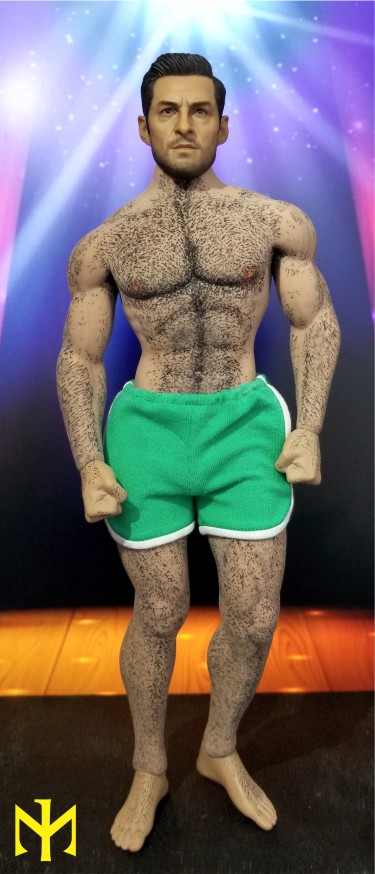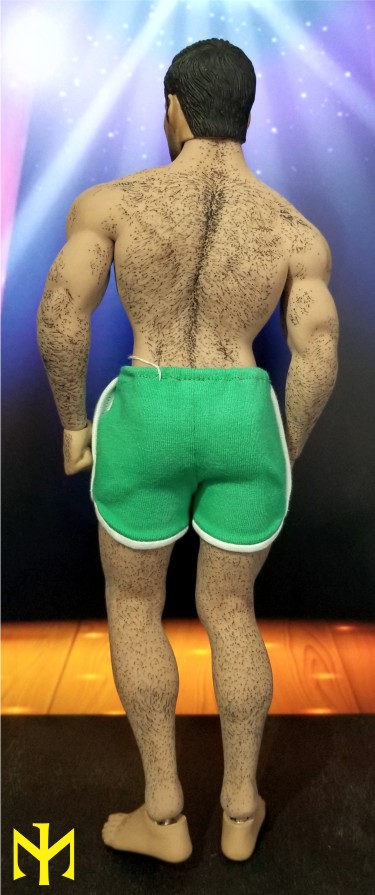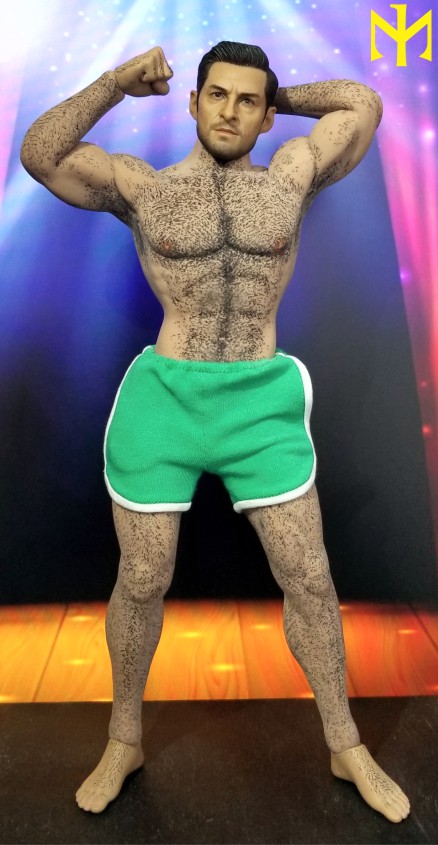Update: the method described here is in fact reversible, see Post 174 below. For a better alternative, see Post 192 below.Seems like several of us are experimenting with applying color -- for various purposes and by various means -- to seamless bodies. I've come up with a little breakthrough, and wrote it up and illustrated it below. Ever since I got the ADD Toys War Wolves "muscle version," I couldn't fail but be impressed with what they did paint-wise, and how it leapt ahead of TBLeague and Jiaou in that respect (less so when it comes to sculpting -- nipples should be 3D! -- especially articulation -- nothing seems to beat a real stainless steel skeleton so far). Now why can't one company get everything right?

Anyway, I sought a way to draw body hair on a TBLeague silicone-covered steel-skeletoned (is that a word?) body. Short of some factory setup with breathers and masks and silicone spray pigments and other futuristic technology (I don't actually know how ADD Toys pulled it off), that was not going to happen. Oil pastel seems to be the easiest approach to coloring the silicone covering of TBLeague bodies (though see now Gooboo's excellent write up of the dyeing alternative), but there is no way oil pastel could produce lines that are sufficiently thin, and the methods used in conventional paintings to produce such lines (by scraping off the excess material) would hardly be applicable here.
So I looked for an oil-based ink pen with a tip small enough to do the job. The best I could find was a Pilot Drawing Pen with Oil-Based Ink, tip size 005 (Pilot M-20DRN05-B, 200, is the name/number that appears above the bar code on the pen; the rest is in Japanese). These come in very limited color (black, maybe also blue and red -- at least the other sizes do), so I went for black.
For the experiment, I took one of my M30 bodies (TBLeague's first go at a seamless male body, turned out too pale/greyish and short, some say too cartoonish), gave it a gentle wash to remove the protective powder, colored the nipples with oil pastels to get that part out of the way, and proceeded with hand drawing the little hairs. On a hard smooth surface the line is very fine, though not quite as fine as the painted hairs on the ADD Toys muscle body; on the silicone cover the line is less fine and harder to draw, but still better than any of the alternatives I could think of. Hand drawing body hair can get tedious real fast, but I am stubborn for a reason; still, more patience and care might have produced a somewhat better result. But ultimately, this is for experimental purposes.
As expected, the oil-based ink was able to bond with the silicone surface once that had been cleared of protective powder. It did not come off when gently washed off and patted dry. It dulled just a little bit when I re-applied protective powder over it (and that is actually a good thing, otherwise it was a bit shiny and sharp; besides, the silicone surface should be protected). It did not transfer on paper towels or clothing. A drop of water left on top of it had no effect; but rubbing the water in a bit led to a little bit of smudging (though not washing off or color transfer).
Update: for more on this, see Post 174 below.Regardless of my success or failure in drawing the body hair (I may have gotten carried away) in a remotely realistic manner or the suitability of this tip for that purpose (I don't think we can find a finer one), the permanent coloring goal seems to be successfully attained. A number of you have expressed concern about finding a way to draw tattoos on these bodies, and this might work even better for those than it does for body hair (you might want to get both this finest tip and one of the slightly less fine ones to cover more ground).






What do you think?
Update: the method described here is in fact reversible, see Post 174 below. 











